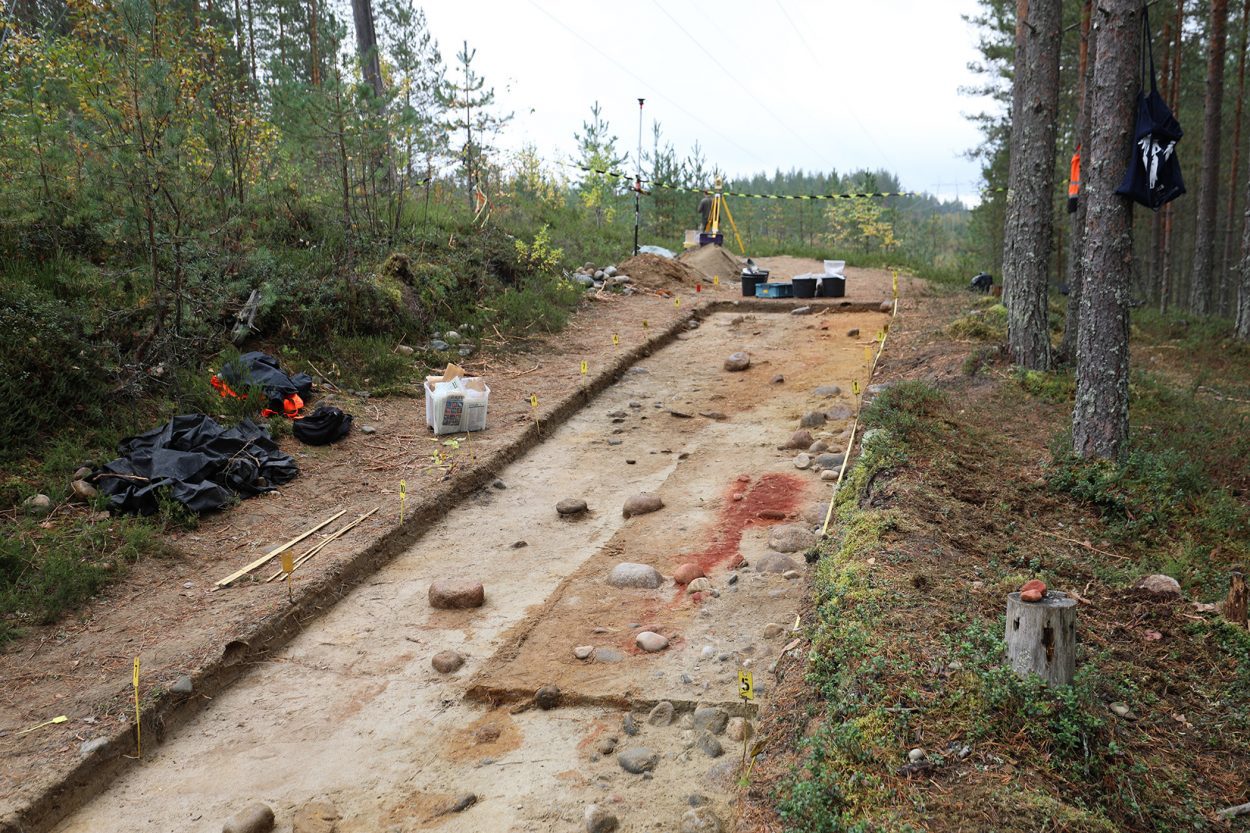A soil analysis of a Stone Age grave in Finland has revealed new insights into prehistoric burial practises.
Archaeologists from the University of Helsinki excavated the grave of an adolescent child in Majoonsuo, situated in the municipality of Outokumpu in Eastern Finland.
Excavations found limited human remains, with only several teeth from the deceased being uncovered that an anthropological study suggests was between 3 and 10 years of age.
Two transverse arrowheads made of quartz and two possible quartz objects were also discovered. Based on the shape of the arrowheads and shore-level dating, the burial has been estimated to date from the Mesolithic period.
The team also found small fragments of bird feathers, canine and mammalian hairs, and plant fibres through a soil analysis. Normally, organic remains in Finland degrade due to the high level of acidity in the soil, resulting in very few examples from the Stone Age containing organic objects or remains.

From the soil samples, a total of 24 microscopic (0.2–1.4 mm) fragments of bird feathers were identified, most of which originated in down. Seven feather fragments were identified as coming from the down of a waterfowl (Anseriformes) which may have been used to make clothing.
One falcon (Falconidae) feather fragment was identified which may have been part of the fletching of the arrows attached to the arrowheads, or, for example, from feathers used to decorate the clothing.
24 fragments of mammalian hair were also identified, ranging from 0.5 to 9.5 mm in length, in addition to three hairs of a canine, possibly a predator, found at the bottom of the grave. The hairs may also originate, for example, in footwear made of wolf or dog skin. It is also possible a dog was laid at the child’s feet.
“Dogs buried with the deceased have been found in, for example, Skateholm, a famous burial site in southern Sweden dating back some 7,000 years,” says Professor Kristiina Mannermaa, University of Helsinki.
“The discovery in Majoonsuo is sensational, even though there are only hairs left from an animal or animals – not even teeth. We don’t even know whether it’s a dog or a wolf,” she says, adding: “The method used, demonstrates that traces of fur and feathers can be found in graves that are several thousands of years old, including in Finland.”
“This all gives us a very valuable insight about burial habits in the Stone Age, indicating how people had prepared the child for the journey after death”, says Kirkinen.
https://doi.org/10.1371/journal.pone.0274849
Header Image Credit : Tom Bjorklund





